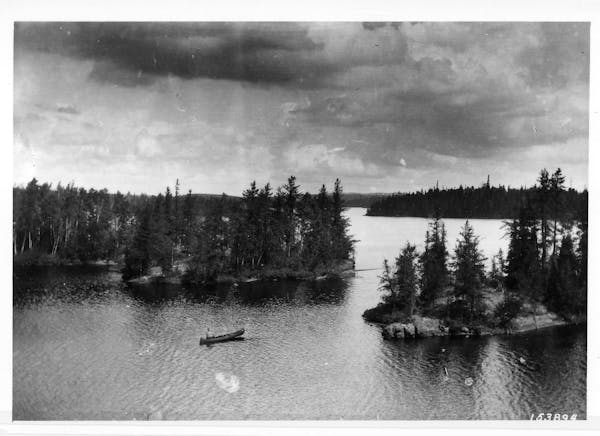In December, snow still is marvelous and elegant.
It hasn't become commonplace and worn out its welcome. A fresh snowfall adds a new dimension in our neighborhoods as it covers our litter, heals the scars, and gives us soft beauty filled with wonder. Yes, snow on evergreen boughs is one of nature's most splendid sights. Forty years of statistics suggest that there is a 92% chance of a white Christmas with one inch or more of snow in International Falls, a 74% chance in St. Cloud, and a 72% chance in the Twin Cities.
Soon after freeze-up, ice sheets on lakes are heard cracking and booming. These loud, sometimes long roars and rolls don't necessarily mean that the ice is unsafe to walk on, but the eerie sounds remind us to respect the ice, which expands when warmed and contracts when cooled. The changing temperatures cause ominous thundering and cracking. Always keep in mind that it takes 4 inches of new solid ice in contact with stationary water for safe walking, skating and ice fishing.
If you want to see open water through December, and through all of winter most years, take a drive along the North Shore of Lake Superior. As the winter passes, fantastic ice patterns form on the rocky shoreline from wave spray. The beautiful blue tones of the water's surface remind us again and again that water is life. Birders lately in the Grand Marais area have been seeing flocks of bohemian waxwings and pine grosbeaks feeding on the bright red-orange fruit of the native mountain ash trees.
Found throughout Minnesota, the red fox leaves its tracks in the snow. They are omnivorous, readily consuming apples, berries, fish, mice and rabbits, and may also visit wildlife feeding stations to eat sunflower seeds, suet, dog food and chicken scraps. Red foxes are shy and do not pose a threat to children or pets. Mated pairs will defend their territory from other foxes. However, they are often killed by coyotes and wolves. Red foxes weigh 7 to 15 pounds.
Red squirrels are active all winter but will hole-up in bad weather. They prefer evergreen forests, which explains why they're far less abundant in southern Minnesota than in the north. Favorite winter foods include seeds from the cones of spruces, pines and balsam fir trees. The range of a red squirrel is small, seldom more than 400 feet in diameter. Like the blue jay, it is a sentinel of the forest. If anything unusual is going on in a red squirrel's territory, it responds with a loud chattering. Like the gray squirrel, the red prefers tree holes for shelter but will build a home of leaves with tree bark for insulation if no tree cavity is available.
Deer begin dropping their antlers this time of year. Ring-necked pheasants feed in corn stubble fields and even take red fruit from sumac shrubs. Screech owls often roost in wood duck houses, as do gray squirrels and other animals. Northern white cedars, and the various pines and spruces, plus balsam firs, each have their own shade of green.
December is full of natural marvels, from an intricate snowflake to a chickadee taking seeds from a human hand, to the sight of Orion and the Big Dipper on a cold clear night. Take time to celebrate the beauty and wonder.
Jim Gilbert has taught and worked as a naturalist for more than 50 years.
Scoggins: The area where shots get blocked serves as a proving ground for Wild

For Wild's leader, playoff time and payoff time arrive together
Minnesota's top Class of 2026 boys basketball recruit commits to Iowa State
Reusse: Gophers volleyball team resets with a legacy setter in the middle of matters

